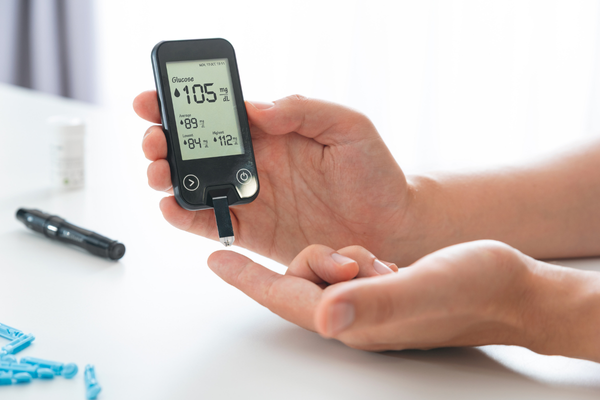Why should you keep your blood triglycerides within the normal range when you are having diabetes?-By Dr Harold Gunatillake

Transcript:
Excess Dietary fats and carbs you consume are ultimately stored as triglycerides and form most of the fat stored in the human body.
They come from butter, margarine, meat, and oils we eat. Foods and beverages high in triglycerides include sugary foods, and drinks, alcohol, starchy foods, foods with saturated fats, high calorie foods and refined grains.
Triglycerides from all above foods are stored in the fat cells and the liver. These stored triglycerides in your body are released through hormonal activities for energy between meals.
You assess the triglycerides in the body by performing a fasting blood test, as they are also found in your blood.
They are comprised of long chains of glycerol molecules, each of which is attached to three molecules of fatty acids- hence the name triglycerides.
There are 3 types of triglycerides in our body, includes saturated, monounsaturated, and polyunsaturated fatty acids.
These triglycerides are named according to the length of the glycerol chain they contain. Examples are oleic acid and palmitic acid.
Oleic acid can be found naturally in numerous foods, including edible oils like olive oil, meat in beef, chicken and pork, cheese, nuts, sunflower seeds, eggs, pasta, milk, olives, and avocados.
Oleic acids when consumed in excess blocks the body from using linoleic acid, an important fatty acid that can mediate inflammation, resulting in low-grade inflammatory state.
Linoleic acid is used to make arachidonic acid, a fatty acid essential for the synthesis of various hormones. These are inflammatory hormones includes prostaglandins, thromboxane, and leukotrienes. These three classes of hormones are used for the regulation of many physiological processes.
Too much oleic acid can cause lipid accumulation in the liver and give rise to fatty livers.
Oleic acid is the main fatty acid in olive oil, accounts for 55%-83% of total fatty acid content.
So consuming olive oil too much being considered a healthy oil can give problems in your body.
In fact, all oils must be taken in small amounts to keep your weight down and for good health. That will bring down your triglyceride level in your blood.
Contrary, much maligned coconut oil as a poison contains no oleic acid, but the several fatty acids in coconut oil is saturated and the predominant type is lauric acid 47% with myristic and palmitic acids present in smaller amounts. These fatty acids in addition being used as cooking oils have medicinal values, the only oil that has antimicrobial properties.
Coconut oil in Asian cuisines used for frying are in small amounts, and the coconut meat or the kernel used may be from half a coconut, used for curries, and not many triglycerides are formed in your body from using coconut in Sri Lankan cuisines, daily.
Furthermore, coconut oil containing saturated medium chain fatty acids travel directly to the liver via the portal circulation and fully metabolized.
On the other hand, olive oil not maligned is used excessively in Mediterranean diets and Western cuisines and being a monounsaturated fat travel through the lacteals in the small gut and via the thoracic duct enters the blood stream where it is taken for storage in the fat cells, and raising the triglyceride level in the blood stream.
That would be the major difference in metabolism and storage between medium chain fatty acids in coconut and unsaturated fatty acids in mono and polyunsaturated fatty acids.
Now what is the link between triglycerides and diabetes?
Elevated triglyceride levels are also a component of metabolic syndrome., a group of disorders that increase your risk of heart disease, stroke, and type 2 diabetes. The other symptoms of this syndrome include high blood pressure, low HDL cholesterol and excess belly fat.
High triglycerides pe se does not cause diabetes but having high levels increases the risk of diabetes and diabetes increases triglycerides levels too. Both diabetes and triglycerides increase the risk of heart disease which can lead to heart attacks or stroke, so having both compounds the risk.
Up to 70% of people with diabetes have this problem.
High triglycerides in your blood can contribute to hardening or thickening of the artery walls. This is referred to as arteriosclerosis.
Diabetes also like high triglyceride levels cause thickening and hardening of arteries resulting in high blood pressure and heart failure.
Some evidence suggests that having high fasting triglyceride levels can aid in predicting future type 2 diabetes.
Normal fasting triglyceride level is less than 150 milligrams per deciliter, or less than 1.7 millimoles per liter.
If your triglycerides are high in your blood means that you have too much of fat stored in your fat cells.
You need to bring it down below normal range by-
Cutting sweets from your diet – sugars are typically unneeded calories that are converted into triglycerides for storage in the body.
Reduce your refined carbohydrates – simply eating whole grain carbs over white flour products could be very beneficial. Avoid eating white rice and white bread.
Reduce your alcohol intake, too. The best drink to take would be sparkling water with a squeeze of lime juice, or herbal teas.
The most common causes of high triglycerides are obesity with visceral fat and poorly controlled diabetes.
Check your vitamin D levels. Low vitamin D levels can give rise to lipid abnormalities and increased triglycerides, total cholesterol, including high bad cholesterol and low good cholesterol.
Foods that may help lower triglycerides include: Lower fructose vegetables: These include leafy greens, zucchini, butternut squash, green beans, and eggplant.
Lower fructose fruits: Examples include berries, kiwi, and citrus fruits. Ginger and garlic can lower your total cholesterol and triglycerides levels.
Vitamin B Niacin can boost goo cholesterol and lower bad cholesterol and triglycerides.
It is observed that though cheese is high saturated fat, seem to be associated with lower serum triglycerides.
Fish oils have been promoted to help lower triglycerides. Daily exercise is important to decrease your insulin resistance and lower your triglycerides.
So, controlling your triglycerides and diabetes are important to prevent heart disease, stroke among others.
Hope this video talk was useful. Goodbye and stay safe.
Disclaimer:
The information contained in this article is for general information purposes only, and whilst the author will endeavour to keep the information up to date and correct, eLanka makes no representations or warranties of any kind, express or implied, about the completeness, accuracy, reliability, suitability or availability with respect to the eLanka website or the information, products, services, or related graphics contained in this article for any purpose. Any reliance you place on such information is therefore strictly at your own risk. In otherwords, eLanka In no event will we be liable for any loss or damage including without limitation, indirect or consequential loss or damage, or any loss or damage whatsoever arising from loss of data or profits arising out of, or in connection with, the use of this website / article. Also please note that through this website / web page articles you are able to link to other websites which are not under the control of eLanka and therefore we have no control over the nature, content and availability of those sites. The inclusion of any links does not necessarily imply a recommendation or endorse the views expressed within them.





















